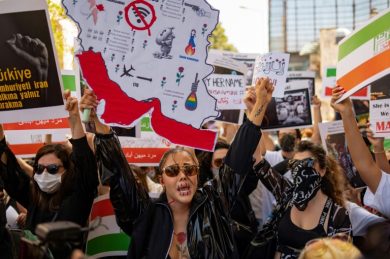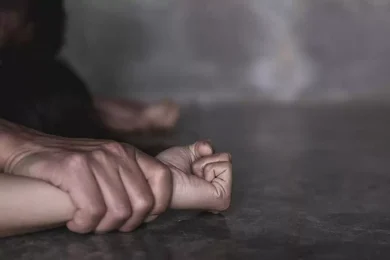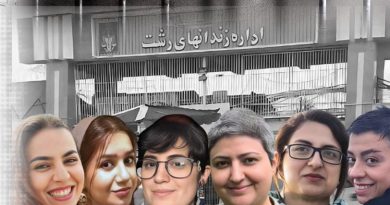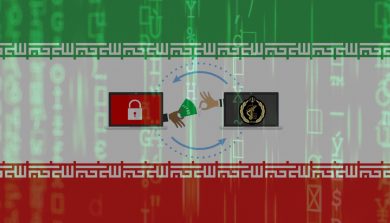In a country where the flow of information is tightly controlled and dissent is often met with brutal repression, a group of fearless women stands at the frontlines of truth-telling. These are Iran’s women journalists—courageous individuals who continue to report, investigate, and share the realities of life under an authoritarian regime, despite facing arrest, torture, exile, or even death.
Under the shadow of the Islamic Revolutionary Guard Corps (IRGC), which polices dissent and manipulates public perception, Iranian women journalists are waging a battle not just for freedom of the press, but for basic human rights, gender equality, and social justice. Their reporting has become a vital lifeline for both domestic audiences and the international community.
This article explores the stories, struggles, and heroism of these women—why they risk everything, how they resist, and how their truth-telling is shaping the future of Iran.
1. The Repressive Landscape for Journalism in Iran
A. The IRGC’s Control of the Media
Iran consistently ranks among the worst countries for press freedom, according to organizations like Reporters Without Borders. At the center of the repression is the IRGC, which:
• Controls state media and censors independent reporting.
• Monitors journalists’ communications, online activity, and personal networks.
• Orchestrates arrests, interrogations, and torture of those who report on sensitive issues.
B. Criminalization of Journalism
Women journalists are routinely charged with:
• “Propaganda against the state”
• “Acting against national security”
• “Spreading false information”
These vague charges give the IRGC broad authority to arrest journalists for virtually any act of independent reporting or criticism.
2. Voices of Courage: Profiles of Women Journalists
A. Niloofar Hamedi – The Journalist Who Broke the Mahsa Amini Story
Niloofar Hamedi was the first reporter to cover the story of Mahsa Amini, the 22-year-old woman whose death in custody sparked nationwide protests.
Hamedi, working for the reformist newspaper Shargh, published a photograph of Amini’s parents grieving in the hospital—an image that ignited outrage.
Shortly after, Hamedi was arrested by the IRGC and held in solitary confinement for months. Despite international calls for her release, she remains a prisoner, her only crime: telling the truth.
B. Elaheh Mohammadi – Reporting on a Funeral, Facing Prison
Elaheh Mohammadi, another brave journalist, reported on Mahsa Amini’s funeral in Saqqez. Her coverage helped bring international attention to the protests.
She, too, was arrested and accused of collaborating with foreign media—a standard tactic used by the IRGC to criminalize independent reporting. Mohammadi has spent months in prison under harsh conditions.
C. Masih Alinejad – In Exile but Not Silent
Masih Alinejad, a journalist and activist now based in the U.S., has long challenged Iran’s mandatory hijab laws through her #MyStealthyFreedom campaign.
Despite being outside Iran, she remains a target:
• The IRGC plotted to kidnap her in 2021.
• In 2022, a man with an assault rifle was arrested outside her home.
Alinejad continues to amplify the voices of Iranian women through international media and social platforms, proving that exile does not equal silence.
3. The Personal Cost of Telling the Truth
A. Arrest, Solitary Confinement, and Torture
Journalists in Iran, especially women, face brutal conditions when arrested:
• Months in solitary confinement
• Physical and psychological torture
• Forced confessions broadcast on state TV
Families are often harassed, and legal representation is denied. Yet, many continue their work after release—or from prison.
B. Career Destruction and Surveillance
Female journalists lose their jobs, are banned from working, and are placed under constant surveillance.
Some are forced into exile, while others risk returning to the field again and again.
4. Digital Resistance and the Power of Global Platforms
A. Using Social Media to Bypass Censorship
Despite state-controlled media and internet blackouts, journalists use:
• Encrypted messaging apps
• VPNs and proxy servers
• Social platforms like Twitter, Instagram, and Telegram
Through these tools, women journalists document:
• Protest videos
• Police violence
• First-hand accounts from inside prisons and hospitals
Their work reaches international audiences and human rights organizations, pressuring the regime.
B. International Media as an Ally
Many journalists collaborate with:
• BBC Persian, IranWire, Radio Farda, and others
• Diaspora-run outlets that provide platforms for stories censored in Iran
This collaboration expands their reach and offers some protection through global visibility.
5. The Symbolic Power of Women Journalists
Iranian women journalists are not only reporters—they are symbols of:
• Resistance against gender apartheid
• Voices for the voiceless
• Truth in a sea of propaganda
Their stories inspire:
• Younger generations of women to pursue journalism
• Protesters who rely on truthful accounts
• Global audiences who seek to understand what’s happening beyond headlines
6. Global Solidarity and the Call to Action
A. International Recognition and Support
Journalists like Hamedi, Mohammadi, and Alinejad have received:
• Awards from PEN America, RSF, and UNESCO
• Nominations for the Nobel Peace Prize
• Support from international governments and human rights organizations
B. What Can Be Done?
Governments, NGOs, and individuals must:
• Demand the immediate release of imprisoned journalists
• Impose targeted sanctions on IRGC officials involved in censorship and torture
• Amplify their stories through media, education, and advocacy
• Support secure tech and legal aid for journalists inside Iran
Conclusion: Telling the Truth, No Matter the Cost
In a land where truth is dangerous, Iranian women journalists continue to risk it all. They are the storytellers, the documentarians of resistance, and the keepers of history. While the regime tries to silence them, their words echo louder than ever—across prison walls, through digital firewalls, and into the hearts of millions.
Their courage demands not just admiration, but action. Because when women journalists speak truth to power, they do not just inform—they transform.
Join Our Newsletter!
Stay informed with the latest updates, news, and ways to take action in the fight for justice and global security. Sign up now to get updates delivered straight to your inbox!





